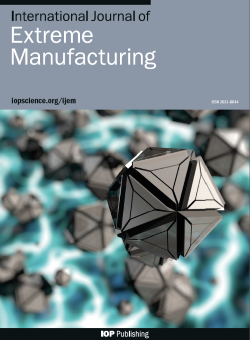3D printing critical materials for rechargeable batteries: from materials, design and optimization strategies to applications
IF 21.3
1区 工程技术
Q1 ENGINEERING, MANUFACTURING
引用次数: 0
Abstract
Three-dimensional (3D) printing, an additive manufacturing technique, is widely employed for the fabrication of various electrochemical energy storage devices (EESDs), such as batteries and supercapacitors, ranging from nanoscale to macroscale. This technique offers excellent manufacturing flexibility, geometric designability, cost-effectiveness, and eco-friendliness. Recent studies have focused on the utilization of 3D-printed critical materials for EESDs, which have demonstrated remarkable electrochemical performances, including high energy densities and rate capabilities, attributed to improved ion/electron transport abilities and fast kinetics. However, there is a lack of comprehensive reviews summarizing and discussing the recent advancements in the structural design and application of 3D-printed critical materials for EESDs, particularly rechargeable batteries. In this review, we primarily concentrate on the current progress in 3D printing (3DP) critical materials for emerging batteries. We commence by outlining the key characteristics of major 3DP methods employed for fabricating EESDs, encompassing design principles, materials selection, and optimization strategies. Subsequently, we summarize the recent advancements in 3D-printed critical materials (anode, cathode, electrolyte, separator, and current collector) for secondary batteries, including conventional Li-ion (LIBs), Na-ion (SIBs), K-ion (KIBs) batteries, as well as Li/Na/K/Zn metal batteries, Zn-air batteries, and Ni–Fe batteries. Within these sections, we discuss the 3DP precursor, designprinciples of 3D structures, and working mechanisms of the electrodes. Finally, we address the major challenges and potential applications in the development of 3D-printed critical materials for rechargeable batteries.可充电电池的3D打印关键材料:从材料、设计和优化策略到应用
三维(3D)打印是一种增材制造技术,广泛应用于从纳米级到宏观尺度的各种电化学储能装置(EESDs)的制造,如电池和超级电容器。这种技术提供了极好的制造灵活性、几何可设计性、成本效益和生态友好性。最近的研究主要集中在3d打印eesd关键材料的应用上,这些材料表现出了卓越的电化学性能,包括高能量密度和速率能力,这归功于改进的离子/电子传输能力和快速动力学。然而,对于3d打印关键材料的结构设计和应用的最新进展,特别是可充电电池,缺乏全面的综述和讨论。在这篇综述中,我们主要集中在新兴电池的3D打印(3DP)关键材料的最新进展。我们首先概述了用于制造eesd的主要3d打印方法的关键特征,包括设计原则,材料选择和优化策略。随后,我们总结了用于二次电池的3d打印关键材料(阳极、阴极、电解质、分离器和集流器)的最新进展,包括传统的锂离子(LIBs)、钠离子(SIBs)、K离子(KIBs)电池,以及Li/Na/K/Zn金属电池、Zn-空气电池和Ni-Fe电池。在这些章节中,我们讨论了3D打印前体,3D结构的设计原则,以及电极的工作机制。最后,我们讨论了可充电电池3d打印关键材料开发中的主要挑战和潜在应用。
本文章由计算机程序翻译,如有差异,请以英文原文为准。
求助全文
约1分钟内获得全文
求助全文
来源期刊

International Journal of Extreme Manufacturing
Engineering-Industrial and Manufacturing Engineering
CiteScore
17.70
自引率
6.10%
发文量
83
审稿时长
12 weeks
期刊介绍:
The International Journal of Extreme Manufacturing (IJEM) focuses on publishing original articles and reviews related to the science and technology of manufacturing functional devices and systems with extreme dimensions and/or extreme functionalities. The journal covers a wide range of topics, from fundamental science to cutting-edge technologies that push the boundaries of currently known theories, methods, scales, environments, and performance. Extreme manufacturing encompasses various aspects such as manufacturing with extremely high energy density, ultrahigh precision, extremely small spatial and temporal scales, extremely intensive fields, and giant systems with extreme complexity and several factors. It encompasses multiple disciplines, including machinery, materials, optics, physics, chemistry, mechanics, and mathematics. The journal is interested in theories, processes, metrology, characterization, equipment, conditions, and system integration in extreme manufacturing. Additionally, it covers materials, structures, and devices with extreme functionalities.
 求助内容:
求助内容: 应助结果提醒方式:
应助结果提醒方式:


